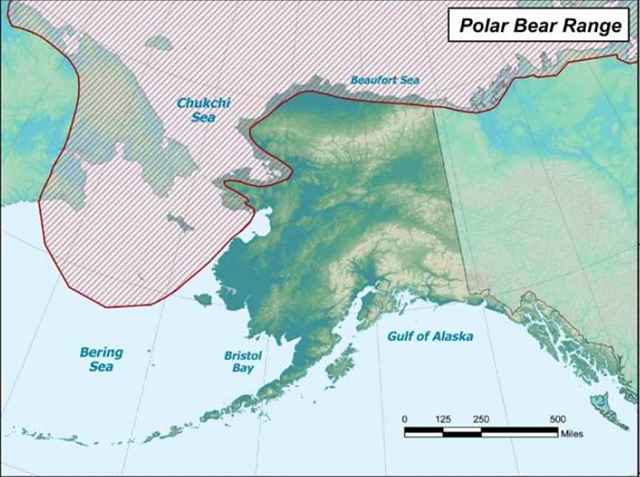
An ancient jawbone has led scientists to believe that polar bears survived a period thousands of years ago that was warmer than today.
Sandra Talbot of the USGS Alaska Science Center in Anchorage was one of 14 scientists who teamed to write a paper based on a polar bear jawbone found amid rocks on a frigid island of the Svalbard Archipelago.
The scientists determined the bear was an adult male that lived and died somewhere between 130,000 to 110,000 years ago, and that bear was similar to polar bears today. Charlotte Lindqvist of the University at Buffalo in New York was the lead author on the paper, published in the March 2010 issue of the Proceedings of the National Academy of Sciences.
An Icelandic researcher in 2004 found a fossilized lower jawbone, in excellent condition and complete with a canine tooth, on a narrow spit of land on the far west edge of Norway’s Svalbard Archipelago. People don’t find many polar bear fossils. The largest bears in the world spend most of their lives on sea ice, so they often die there, and their remains either sink or get scavenged.
With old bone and tooth in hand, scientists got to work with the latest techniques for finding the age of formerly living creatures and determining their genetic backgrounds. The latter is the specialty of Sandra Talbot. She is a research wildlife geneticist who earned her Ph.D. degree at the University of Alaska Fairbanks by helping determine that the mitochondrial DNA of brown bears on Admiralty, Baranof and Chichagof islands of Southeast Alaska is more closely related to that of polar bears than to the DNA of other brown bears.
Talbot said the evidence of a polar bear from 130,000 years ago shows that the creatures somehow survived conditions warmer than they face today.
“This is verifying that the polar bear lived through at least one warming period,” Talbot said. “The Eemian was a very hot period, and polar bears survived it.”
During the Eemian, about 125,000 years ago, the planet was warm enough that hippos lived where London is now. Polar bears, now adapted to eating seals that live only near sea ice, somehow made it through a few thousand years when there may not have been much sea ice, if any existed at all.
“It gives us hope that they survived that stage,” Talbot said. “It does make you think about refugia more.”
“Refugia” are places that polar bears may survive without ice. The Svalbard Archipelago may have been one of those places. Biologists today think polar bears would have a difficult time living on land, due to other species like the grizzly bear that would outcompete them.
The warm period of the Eemian might have come at a time when the polar bear wasn’t such an ice specialist, Talbot said.[xyz-ihs snippet=”Adsense-responsive”]“We can’t predict whether the polar bear is too far out (in its evolution towards a life on ice),” she said. “It’s interesting that there are a few examples of hybridization (between polar bears and brown bears). That’s something worth watching.”
And maybe polar bears have been trying to adapt to life on land, but one species has blocked that avenue of evolution. Polar bears that wander onto land, especially near a human settlement, sometimes get shot. And humans — who didn’t wander out of Africa until about 45,000 years ago — weren’t present on the edge of the sea ice when polar bears first made it their home.
“We weren’t impacting them then the way we are now,” Talbot said.
Though the polar bear perhaps prospered through hot times in the past, what they have in store ahead may be their greatest challenge ever.
“We’re going into a very similar period of time, but it’s generally thought that this is going to be warmer than (the last great warm period),” Talbot said.
Source: Geophysical Institute








